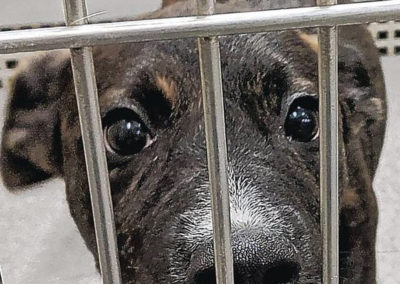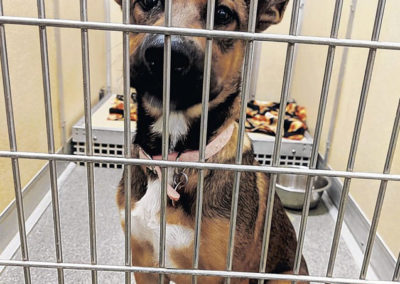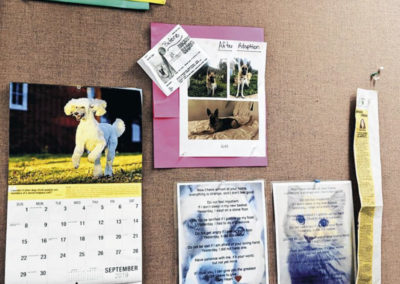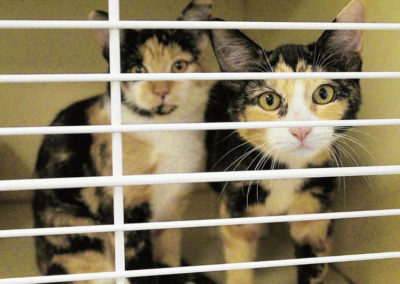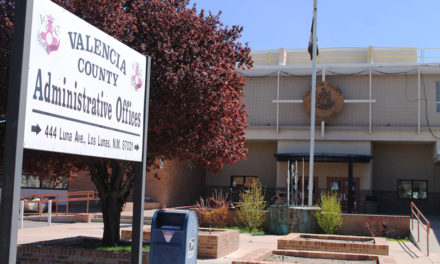Valencia County Animal Shelter
1209 N.M. 314
Los Lunas
505-866-2479
Hours: 9 a.m.-5 p.m., Tuesday through Saturday
co.valencia.nm.us
Facebook: Volunteers of the Valencia County Animal Shelter (unofficial)
Shelter donation needs
Most needed
- Puppy and kitten food and formula
- Canned dog and cat food
- Liquid laundry soap
- Dawn dish soap
- Bleach
- Plastic crates, all sizes
- Collars and leashes
Additional needs
- Dog and cat treats
- Dry dog and cat food
- Cat litter and litter boxes
- Towels and blankets
- Plastic kids pools for dogs with puppies
- Baby bottles
- Hand sanitizer
- Paper towels
- Dog brushes
- Dog and cat toys
- Stainless steel food and water bowl
- Dog and cat shampoo
- Dog beds
Donations to the Valencia County Animal Shelter are tax deductible. Make checks payable to Valencia County Animal Shelter. Use EIN 85-0478175 for deductions.
Transporters
There are rescues and shelters outside of Valencia County that are willing to take some of our adoptable pets into rescue.
Help is needed to drive them from the shelter to locations in Alamogordo, Albuquerque, Santa Fe and several shelters in Colorado.
If you would like to offer your time and vehicle to help get some of our shelter pets to safe places outside of Valencia County, you can sign on as a transport volunteer.
Call rescue transfer coordinator Patty Mugan at 866-2479, Ext. 4.
Low Cost Spay/Neuter
Contact the shelter for further information about low cost spay/neuter events at 866-2479, Ext 4.
Part 3 of 4
(Editor’s note: This is the third in a four-part series about the crisis at the Valencia County Animal Shelter. The series will include articles about successful adoptions, rescue group efforts, overcrowding and euthanasia rates and the ongoing struggle toward the solution.)
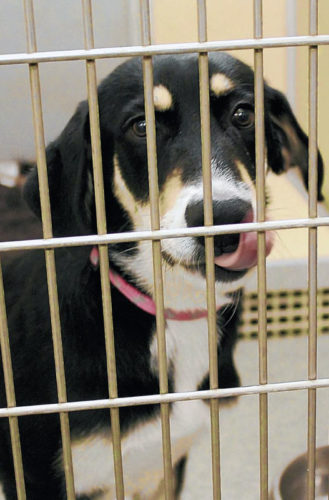
Ready to give a friendly lick to whoever is closest, a dog waits to see what happens next at the Valencia County Animal Shelter. Julia M. Dendinger | News-Bulletin photos
“Some things get easier after working in a shelter for over 10 years. Having a 2-day old pup die in your hands while on the way to a rescue isn’t one of them.”
So began Patty Mugan’s Facebook status on the evening of Wednesday, Aug. 14. The photo of a tiny black and white puppy cupped in her hand accompanied Mugan’s words.
Born in the Valencia County Animal Shelter that Monday, the litter of 10 was reduced to nine after the one with the cleft palate and a heart-shaped spot on his side died.
It wasn’t the first time — it won’t be the last.
A decade ago, Mugan walked into the Valencia County Animal Shelter after seeing a picture of a German shepherd/husky mix featured in the Valencia County News-Bulletin.
From adoptive owner to volunteer to employee, Mugan has become a fixture at the facility, fielding calls, texts and social media messages nearly around the clock as the shelter’s transport coordinator.
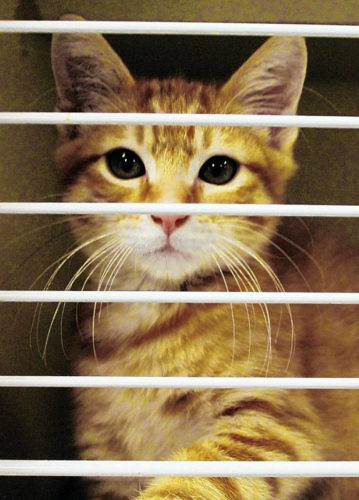
A playful orange tabby, right, waits for a home at the shelter. It is unknown whether this cat was adopted.
“When I started as a volunteer, I was walking dogs and I’d come in the next day and they would be gone,” Mugan said. “Once I realized they’d been put down, I immediately thought, ‘what can I do to help?’”
She and a dedicated team of staff and volunteers network with regional shelters willing and able to take dogs and cats that otherwise might not make it out of VCAS alive.
In 2018, 1,739 dogs and cats were transferred to other shelters and, as of September, 1,202 had been pulled out of the local shelter. Those numbers are small compared to the 5,136 taken in during 2018 and the 4,131 for the first nine months of 2019.
Mugan said some years the shelter has transferred close to 2,000 animals. Knowing there are those that don’t make it out either through adoption, fostering or owner reclaims, is hard, she said.
Animals come to the shelter in rough condition — full of mange, infested with heartworms, hungry, beaten and broken.
“We do what we can and we do it the best we can,” she said. “You see all the dogs that come in and you know they aren’t all going to go out. But maybe their time here will be the best days of their life.”
The ones that do go on to happy homes and live full lives are what keeps Mugan going.
“I love seeing updates. A lot of our adopters will send pictures,” she said. “To get a picture of a dog doing well is the best. Some of them you wouldn’t even recognize from when they came in here.”
In 2018, 1,273 animals were euthanized at the county shelter and, by the end of September, 956 were.
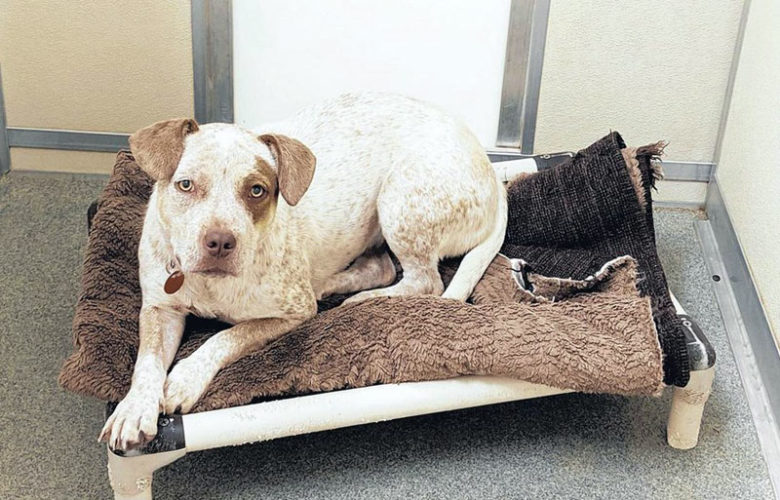
Quietly waiting on her bed, this is one of the many dogs waiting for adoption last month at the Valencia County Animal Shelter. It’s not known if she’s found a home.
Quietly waiting on her bed, this is one of the many dogs waiting for adoption last month at the Valencia County Animal Shelter. It’s not known if she’s found a home.
There are several staff members at the shelter who perform the euthanasia procedure, but Jess Weston, the Valencia County Animal Control director, is the one who makes the decision as to which animals walk into an innocuous room at the shelter and the task carried out.
“I do that. I don’t put that on my crew,” Weston said. “That is not a good room.”
The euthanasia is only one end of the spectrum that is the phenomenon of compassion fatigue all shelter staff and volunteers experience.
“It’s the mental strain of doing what we do. It’s not just euthanasia — from the officer who picks up a stray and creates a bond to the volunteer walking a dog, giving them treats and to the person at the front desk going back and giving them blankets.”
Attachments are formed, personalities discovered and then … the animal is gone.
“Were they rescued? Adopted? Reclaimed? Euthanized?” Weston said. “Some volunteers want to know; they can handle it. Others can’t. It all takes a toll.
“None of us want to do this. None of us take any satisfaction (in euthanasia.) No one wants this.”
Shelter staff is sometimes asked to help a member of the public ease a pet’s suffering, but it isn’t any easier really. Those numbers are included in the shelter’s euthanasia statistics.
“Community members can bring in their animals. Sometimes they are elderly animals, sick, have a poor quality of life,” Weston said. “We do the exact same procedure as a veterinarian would do, but we don’t charge.
“It’s still hard. It’s not something we want to have to do. We shut down and do what we have to.”
Mental health care comes with the county’s health insurance but for the most part, it’s hard to find providers who truly understand the toll the job takes, he said. At the conferences and training seminars staff members attend, compassion fatigue treatment is built in to the materials.
“We’re more family than employees. We all know when someone is having a bad day, when something is bothering them,” Weston said.
Valencia County Animal Shelter
Everyone who does euthanasia procedures at the shelter are certified through the state board of veterinarian medicine, and all staff members go through the training whether they get certified or not.
“Everyone who works here knows what happens,” Weston said. “Those who are certified take continuing education classes and have to renew their certification every year.”
The procedure is very professional and humane, he said, far from the fears and old stories about the use of a gas chamber or animals being shot.
Every animal is tranquilized before the final injection is administered using the exact same medications and procedure as a vet.
“Everything is done with great care and emotion,” Weston said.
With the increase in adoptions and transfers in the last decade, having to euthanize for space has become more infrequent but does still happen, he said.
“We do everything possible, but sometimes there’s no other choice,” he said. “I know a lot of shelters say they are ‘no kill,’ and we could get there, too, but we would still be doing that procedure for the people in the community. We would still offer that service.”
The room where the animals are euthanized is “not a good room,” Weston says.
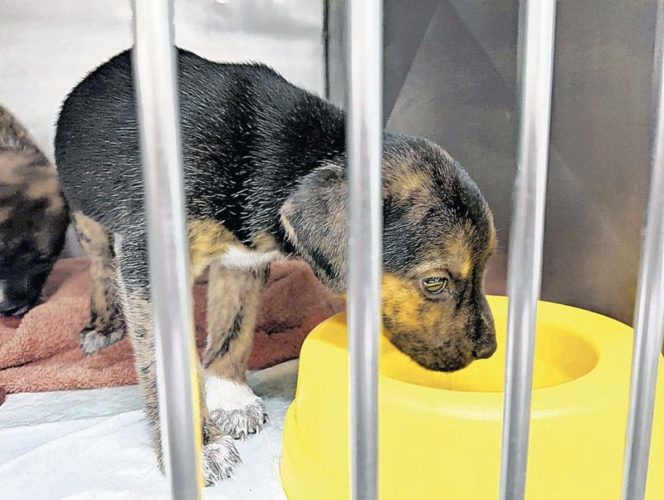
Puppies, adult dogs, pregnant females. They all end up at the Valencia County Animal Shelter. It is unknown whether all the members of this litter were adopted.
Puppies, adult dogs, pregnant females. They all end up at the Valencia County Animal Shelter. It is unknown whether all the members of this litter were adopted.
It’s plain and a bit shabby, a drain in the center of the concrete floor surrounded by chipped layers of paint. On one wall is a stack of cages with animals in quarantine, the doors covered with a blanket.
“We don’t have an actual quarantine room,” the director said.
If an animal is suspected of having rabies, and they can’t wait for the 10-day hold, the head of the animal has to be sent in for testing.
In the corner is a stack of five-gallon buckets. There’s a hatchet on a nearby shelf.
Julia M. Dendinger began working at the VCNB in 2006. She covers Valencia County government, Belen Consolidated Schools and the village of Bosque Farms. She is a member of the Society of Professional Journalists Rio Grande chapter’s board of directors.
